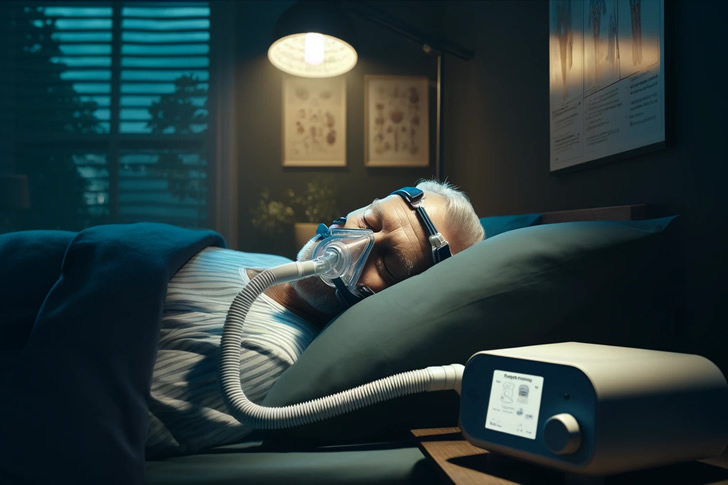Understanding Sleep Apnea: Mystery That Experts Want You to Know
Sleep apnea is a severe sleep disorder that affects breathing patterns during sleep and can significantly impact overall health.

Introduction
Sleep apnea is characterized by repeated interruptions in breathing throughout the night due to partial or complete obstruction of the airway. These interruptions, known as apneas, can significantly impact the quality of sleep and overall health, leading to increased risk of various health issues including heart disease, stroke, and diabetes. This disorder affects millions worldwide, with multiple forms including obstructive sleep apnea (OSA), central sleep apnea (CSA), and mixed sleep apnea, which combines elements of both.
Common Causes of Sleep Apnea
Anatomical Factors
The most common cause of obstructive sleep apnea is an anatomical blockage of the airway, often due to the relaxation of the muscles in the back of the throat. Factors such as enlarged tonsils or adenoids, obesity (which adds fatty tissue around the airway), and particular structural features like a large tongue or a small jaw can also contribute to this condition.
Neuromuscular Control
Central sleep apnea, less common than OSA, occurs when the brain fails to send proper signals to the muscles controlling breathing. This form is often associated with certain medical conditions, including heart or neuromuscular disorders, and the use of certain medications.
Symptoms of Sleep Apnea
The most common symptoms of sleep apnea include:
- Loud snoring
- Episodes of breathing cessation during sleep observed by another person
- Abrupt awakenings accompanied by shortness of breath
- Awakening with a dry mouth or sore throat
- Morning headache
- Difficulty staying asleep (insomnia)
- Excessive daytime sleepiness (hypersomnia)
- Attention problems and irritability
Signals of Sleep Apnea
Symptoms of sleep apnea can include loud snoring, sudden awakenings accompanied by gasping or choking, morning headache, daytime sleepiness, difficulty concentrating, mood changes, high blood pressure, and night sweats. Recognizing these symptoms early can lead to a diagnosis and effective treatment plan.
Sleep Apnea Causes and Treatments in Seniors
In seniors, sleep apnea may be exacerbated by the relaxation of muscle tone around the airway as part of the aging process, and the presence of other health conditions such as heart disease or obesity. Treatment often requires a multifaceted approach, involving lifestyle changes (like weight management and sleeping on one’s side), medical devices such as CPAP machines, or even surgery in severe cases.
2024 New Sleep Apnea Treatments Without CPAP
Looking ahead to 2024, several promising sleep apnea treatments are emerging that do not involve continuous positive airway pressure (CPAP) machines. These include:
- Hypoglossal nerve stimulation (HNS): This treatment involves implanting a device that stimulates the nerve controlling tongue movement, thereby keeping the airway open.
- Oral appliances: These devices adjust the position of the mouth to prevent airway blockage.
- Surgical options: Techniques such as upper airway stimulation or jaw repositioning are being refined.
- Positional therapy: Encouraging sleep in a non-supine position to prevent airway collapse.
Micro CPAP for Seniors
Micro CPAP devices are a newer development designed to offer a more comfortable and less intrusive alternative to traditional CPAP machines. These small devices fit directly into the nostrils and are battery-operated, eliminating the need for hoses and external power sources, making them particularly suitable for seniors who may find larger units cumbersome.
Doctor: Simple “Mouth Trick”
One innovative approach being explored is a “mouth trick,” also known as “tongue exercises” or “oropharyngeal exercises.” These exercises strengthen the muscles in the throat, which can help keep the airway open during sleep. This method can be particularly useful for mild cases of sleep apnea and can be an adjunct to other treatments.
Cost Comparison Across Different U.S. Districts
The cost of treating sleep apnea varies significantly across different regions in the United States. Here are ten examples of the cost of initial consultation and subsequent treatment with a CPAP device in various districts:
- New York, NY: $350 for consultation, $850 for CPAP machine
- Los Angeles, CA: $300 for consultation, $800 for CPAP machine
- Chicago, IL: $250 for consultation, $750 for CPAP machine
- Houston, TX: $200 for consultation, $700 for CPAP machine
- Phoenix, AZ: $220 for consultation, $720 for CPAP machine
- Philadelphia, PA: $280 for consultation, $780 for CPAP machine
- San Antonio, TX: $180 for consultation, $680 for CPAP machine
- San Diego, CA: $290 for consultation, $790 for CPAP machine
- Dallas, TX: $210 for consultation, $710 for CPAP machine
- San Jose, CA: $330 for consultation, $830 for CPAP machine
These figures can vary based on insurance coverage and the specific medical provider.
Conclusion
Sleep apnea is a complex disorder with significant health implications. Understanding its causes, recognizing its signs, and exploring the latest treatments—including non-CPAP options—are essential for managing this condition effectively. Advances in technology and therapy are making treatment more accessible and less intrusive, particularly for seniors, who may find traditional CPAP machines difficult to use. Early detection and proactive management remain key in mitigating the adverse health effects associated with this sleep disorder.







Recent Comments